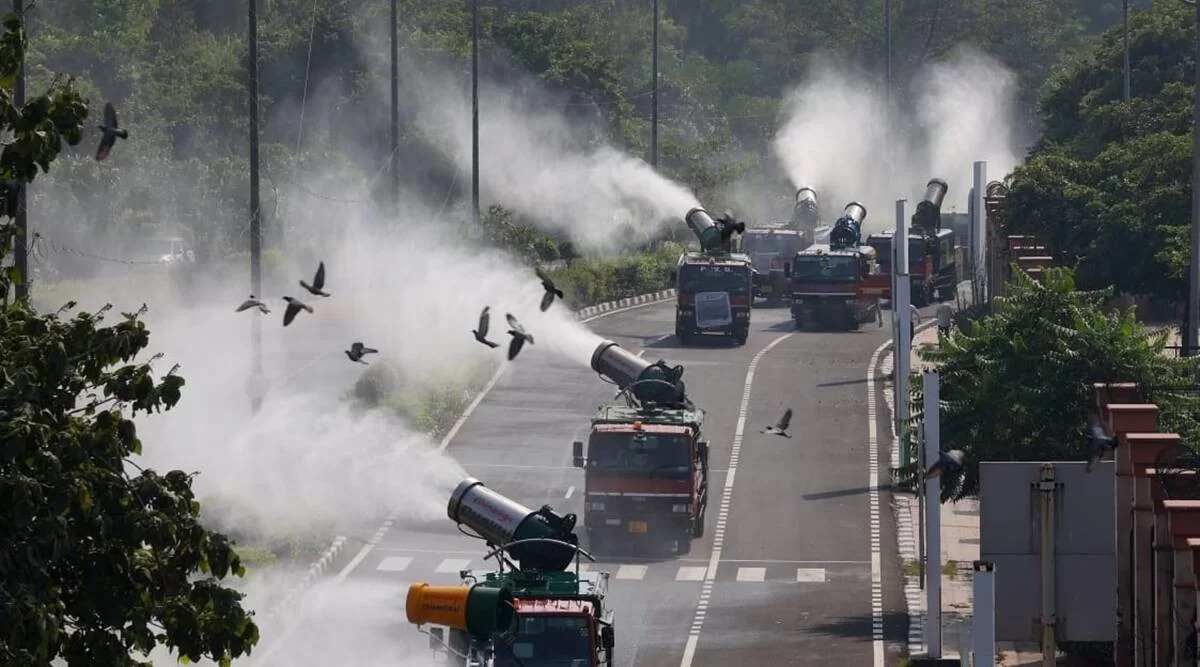A thick layer of smog has engulfed the capital since Diwali. (Express Photo)
Last week, the national capital again recorded a string of bad air days, with Delhiites looking out of their windows on Thursday morning to see a blanket of grey – that day, the 24-hour average Air Quality Index touched 426.
November 6, 2022 4:25:59 am
Written by Dr Gufran Beig
In 2010, when India hosted the Commonwealth Games (CWG) in Delhi, I was given the responsibility to lead SAFAR (System of Air Quality and Weather Forecasting and Research), a project conceived, designed, and developed under the guidance of the Indian Institute of Tropical Meteorology and then secretary of Ministry of Earth Sciences, Dr Nayak.
While my team and I successfully launched the project, air quality, a major aspect of our research, received scant attention in the media due to a lack of awareness. Despite frantic efforts by our team, air pollution was a subject that barely got any attention in newspapers and television channels. Until, of course, it became virtually difficult to breathe.
But since then, we have covered considerable ground, a measure of which can be gauged by a statistic – in 2010, if 20 calls to media organisations by SAFAR yielded a small news item, if at all, in 2022, we have had to make no calls but the subject of pollution and air quality has been getting blanket coverage.
Last week, the national capital again recorded a string of bad air days, with Delhiites looking out of their windows on Thursday morning to see a blanket of grey – that day, the 24-hour average Air Quality Index touched 426. AQI between 401 and 500 is considered ‘severe’ and can affect even healthy people and seriously impact those with existing diseases.
We are today standing on the edge, realising the adverse impact of elevated concentrations of pollutants on our health. We often witness thick, black smoke belching out of the exhaust pipes of vehicles, swirls of dust, ash and soot from burning garbage, dry leaves, wood and stubble, and smokestacks at factories, power plants and auto paint shops.
SAFAR performs a major role in providing air quality forecasts along with precautions and advisories to the public in a simple and user-friendly format.
Some particles suspended in the air are large enough to be seen, others are so small that they can only be detected with an electron microscope. The most dominant air pollutant in metro cities is PM 2.5, which are particles having a size less than 2.5 micrometres. The air quality index (AQI) in Delhi as well as most parts of India improves during the monsoon as PM 2.5 gets washed off. In winter, stagnant weather patterns (calm winds) and falling temperature combined with an increase in emissions due to stubble burning or fireworks during the festive season lead to dense grey smog during October-November. The smog caused due to pollution combines with the fog in December-January, enveloping many Indian cities, reducing visibility and forcing fight cancellations/delays.
The smog also causes respiratory distress such as cough and nose irritation. There is no discernible trend in Delhi’s air quality if data from the past 12 years is scientifically analysed, though a slight decline is noticed after 2015. The annual PM 2.5 average in Delhi is hovering between 90-100 µg/m3. However, the alarming part is that the frequency and duration of extreme pollution events have been increasing in recent years. It is, for sure, linked to meteorology and transboundary transport, but the bigger and more serious question is whether these events are manifestations of climate change.
Currently, each one of us is trying to be a part of the ambitious “Swachch Bharat Mission”. We have enthusiastically helped in keeping our surroundings such as roads, offices, public places etc. clean. But few of us are aware of the quality of the air we breathe. We don’t know what goes inside our lungs when we take 28,000 breaths and inhale 12,000 litres of air per day. But is there anything you can do except drink more water to help the body discharge the toxins? Yes, you can. You can help reduce combustion by conserving energy in your home and at the workplace.
Remember the regulations for open burning; make sure that your vehicle is serviced periodically; and think about alternative ways to travel such as walking, biking, taking the bus, or ridesharing. If there is dust, smoke, or any other air quality issues near your home, school and office, please educate people about it.
The writer is Founder Project Director, SAFAR-India & Chair Professor, NIAS, IISc, Bangalore
© The Indian Express (P) Ltd
